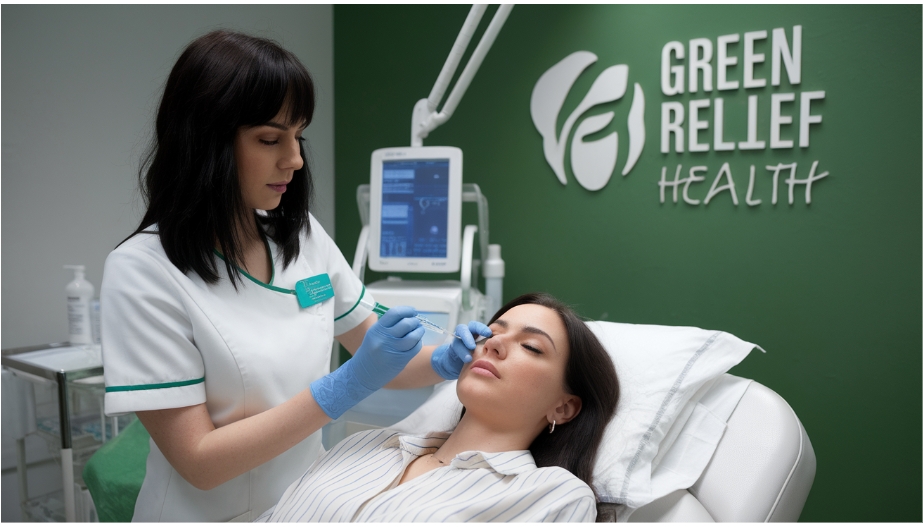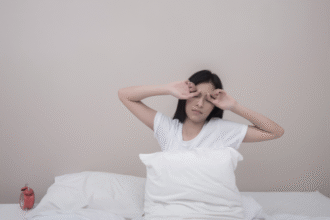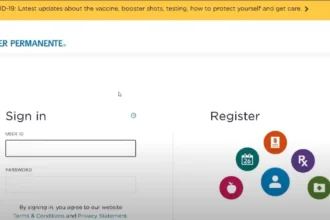Botox has become increasingly popular as a non-surgical cosmetic treatment. It can temporarily reduce the appearance of wrinkles and fine lines, giving you a smoother, more youthful appearance.
Botox works by blocking nerve signals to the muscles, which temporarily relaxes them and smooths out the skin. But how long can you expect these effects to last? And are there ways to maximize the duration of your results?
In this comprehensive guide, we’ll explore the factors that influence Botox longevity and provide practical tips to help you make the most of your treatment. We’ll also delve into the potential risks and side effects of Botox and how to minimize them.
Understanding Botox and Its Effects
Botox is a brand name for botulinum toxin type A, a neurotoxin that temporarily paralyzes muscles. When injected into specific facial muscles, Botox blocks the nerve signals that cause these muscles to contract.
This reduces the appearance of wrinkles and fine lines caused by repeated muscle movements, such as crow’s feet, forehead lines, and frown lines.
Botox is not the only botulinum toxin type A injection available. Other options include Xeomin, Dysport, and Jeuveau. While they all work similarly to relax muscles, they may have slight differences in their onset, duration of action, and diffusion.
It’s important to note that the effects of Botox are not immediate. It typically takes 3–5 days for the initial effects to be noticeable and up to 2 weeks for the full results to appear.
How Long Does Botox Last?
The effects of Botox are not permanent. Typically, they last for about three to four months, although this can vary depending on several factors. Some people may see results for up to six months, while others may find that the effects wear off sooner.
Factors Affecting Botox Longevity
Several factors can influence how long Botox lasts, including:
- Metabolism: Individuals with faster metabolisms may find that Botox wears off more quickly.
- Muscle strength: Stronger facial muscles may require more frequent treatments or higher doses of Botox.
- Dosage: The dosage of Botox can affect both the onset and duration of its effects. Higher doses may lead to longer-lasting results.
- Injection technique: The skill and precision of the injector can significantly impact the results and longevity of Botox.
- Treatment area: Different areas of the face have varying rates of muscle movement and metabolism, which can affect how long Botox lasts.
- Frequency of treatments: Regular Botox treatments may train muscles to stay relaxed for longer periods, potentially extending the time between treatments.
- Lifestyle factors: Sun exposure, smoking, and excessive alcohol consumption can accelerate skin aging and potentially reduce the longevity of Botox.
- Individual variation: Everyone’s body responds differently to Botox, and factors like genetics, overall health, and individual physiology can affect how long it lasts.
- Hyperdilute or hyperconcentrated Botox: Recent research indicates that the duration of botulinum toxin type A injections is heavily influenced by the dose strength. Higher doses of toxin, sometimes referred to as hyperconcentrated Botox, tend to exhibit longer-lasting effects compared to lower doses.
Potential Risks and Side Effects of Botox
While Botox is generally safe when administered by a qualified and experienced healthcare professional, there are potential risks and side effects to be aware of. These include:
- Bruising and pain at the injection site: This is the most common side effect and usually resolves within a few days.
- Headache or flu-like symptoms: These are less common and typically mild.
- Droopy eyelids or crooked eyebrows: This can occur if the Botox is injected incorrectly or migrates to unintended areas.
- A crooked smile or drooling: This is rare and usually temporary.
- Watery or dry eyes: This can occur if the Botox affects the muscles around the eyes.
- Infection at the injection site: This is rare but can be serious.
In rare cases, the toxin may spread to other parts of the body, causing botulism-like symptoms such as breathing problems, trouble swallowing, muscle weakness, and slurred speech.
Minimizing Botox Side Effects
To minimize the risk of side effects, it’s crucial to:
- Choose a qualified and experienced injector: This can significantly reduce the risk of complications.
- Follow post-treatment instructions: Avoid rubbing or massaging the treated area, strenuous exercise, and alcohol consumption for at least 24 hours after treatment.
- Apply cold compresses: This can help reduce swelling and bruising.
- Keep your head elevated: This can also help reduce swelling.
- Consider Arnica supplements: Arnica Montana may help reduce bruising and swelling.
Techniques to Maximize Botox Duration
While the longevity of Botox is influenced by various factors, there are several techniques you can use to maximize the duration of your treatment:
- Follow post-injection guidance: Avoid rubbing or massaging the treated area for at least 24 hours after your Botox injections. This can help prevent Botox from spreading to unintended areas and potentially diminishing its effectiveness.
- Avoid strenuous exercise: Intense physical activity can increase blood flow to the face, which may cause Botox to migrate from the injected areas. It’s best to avoid strenuous exercise for at least 24 hours after treatment. However, moderate exercise is beneficial for overall skin health and can complement Botox’s effects.
- Schedule regular maintenance sessions: Regular Botox treatments can help maintain the effect of Botox on muscles that smooth over wrinkles. Botox treatments are often spaced three to four months apart.
- Take a break from Botox treatments at times: Allowing your muscles to regain some function can help prevent resistance to Botox.
- Avoid abrasive skincare products or treatments: After Botox, it’s best to avoid any skincare treatments that can irritate the skin. These include chemical peels or retinoids.
- Avoid too much sun exposure: Sun damage can reverse the benefits of Botox by breaking down collagen and causing more lines and wrinkles.
- Be consistent with your skincare routine: A good skincare routine can help prolong Botox results. A gentle skincare regimen that hydrates and protects the skin is important for enhancing and maintaining results after a Botox treatment.
- Eat healthy food: Eating a healthy diet can support Botox results. A diet rich in antioxidants, like fruits and vegetables, can help protect the skin and improve overall skin health, supporting the effects of Botox.
- Stay hydrated: Hydration is important for maintaining skin elasticity and overall health. This can also contribute to the durability of Botox results.
- Avoid feeling stressed: Stress can accelerate the breakdown of Botox and speed up the aging process. Techniques like yoga and meditation can be beneficial.
- Strengthen and tone your facial muscles: Engaging in facial exercises can help tone the muscles and improve the longevity of Botox effects.
- Stop smoking: Smoking accelerates skin aging and can reverse Botox results.
- Get complete sleep: Complete sleep helps the body repair itself. This is important for maintaining skin health and the effects of Botox.
- Choose a qualified dermatologist: The experience and technique of a dermatologist play a role in how effective and long-lasting your Botox results are.
- Zinc Supplementation: A study in the Journal of Drugs in Dermatology found that people who received Botox and then took a 50-milligram zinc supplement saw their results last significantly longer. Over 90% of participants who received the supplement, rather than the placebo, reported around a 30% increase in the duration of the initial injections.
- Botox Injection Patterns: The injection pattern used for Botox can also affect the longevity of results. Different areas of the face have specific injection patterns to achieve optimal outcomes.
Botox for Different Concerns
Botox is primarily used to treat dynamic wrinkles, which are caused by muscle movement. However, it can also be used to treat a variety of medical conditions and other cosmetic concerns.
| Concern | Description |
| Forehead lines | Horizontal lines that appear across the forehead when you raise your eyebrows. |
| Frown lines (glabellar lines) | Vertical lines appear between your eyebrows when you frown. |
| Crow’s feet | Fine lines that radiate from the corners of your eyes, are often more pronounced when you smile or laugh. |
| Bunny lines | Wrinkles that appear on the sides of your nose when you laugh or smile. |
| Gummy smile | A smile that shows a lot of gum. Botox can be used to treat a gummy smile by weakening the lip muscles that elevate the upper lip. The typical dosage is 2–4 units, and the results can last between 3 and 5 months. |
| Dimpled chin (cobblestone chin) | A chin that appears dimpled or bumpy. |
| Neck bands (platysmal bands) | Vertical bands that appear on the neck as we age. |
| Lip lines (smoker’s lines) | Fine lines that appear around the mouth due to age, smoking, or using straws frequently. |
| Downward smile | A smile that turns downwards at the corners of the mouth. |
| Migraines | Botox can be used to prevent chronic migraines in adults. |
| Excessive sweating (hyperhidrosis) | Botox can be used to treat excessive sweating in the underarms, palms of the hands, and soles of the feet. |
As you age, Botox may become less effective in treating wrinkles, and combining it with dermal fillers might be beneficial in those cases.
Long-Term Effects of Botox
While the effects of Botox are temporary, there are some potential long-term effects to be aware of:
- Muscle atrophy: With chronic use, Botox can cause the muscles to weaken and atrophy (shrink). However, this effect is reversible if you stop getting injections.
- Modifying facial expressions: Botox may help you frown less over time by weakening the muscles responsible for frowning.
Botox vs. Dermal Fillers
Botox and dermal fillers are both injectable treatments that can address lines and wrinkles, but they work in different ways. Botox relaxes muscles to smooth out dynamic wrinkles, while fillers add volume to the face to address wrinkles caused by skin laxity, sun damage, and sagging.
Cost of Botox Treatment
The cost of Botox treatments can vary based on the provider, location, and number of units used. It’s important to discuss the cost with your provider during your consultation.
Key Takeaways
Botox is a popular and effective treatment for reducing the appearance of wrinkles and fine lines. While its effects are temporary, typically lasting 3–4 months, there are ways to maximize their duration.
By understanding the factors that influence Botox longevity and following the tips outlined in this guide, you can make the most of your treatment and enjoy a smoother, more youthful appearance for longer.
Here are some key takeaways:
- Choose a qualified and experienced injector.
- Follow post-treatment instructions carefully.
- Maintain a healthy lifestyle.
- Protect your skin from the sun.
- Consider zinc supplements.
- Schedule regular maintenance treatments.
- Be patient and realistic about your results.
















